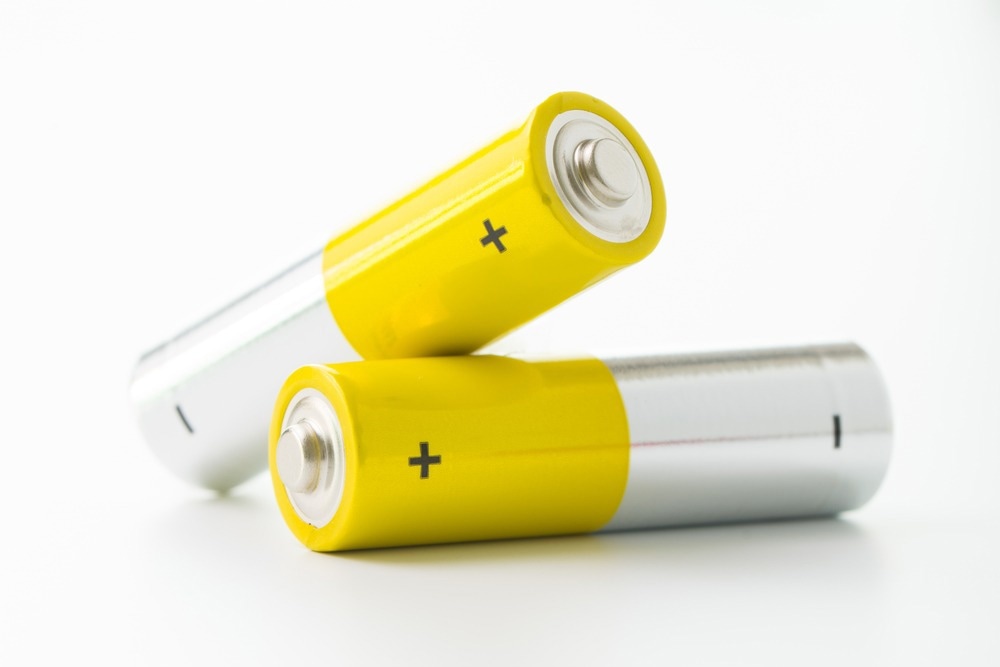Scientists from China have presented research into using corrugated layered titanates in potassium-ion batteries to enhance their performance. The new paper appears in the journal ACS Materials Letters.

Study: Corrugated Layered Titanates as High-Voltage Cathode Materials for Potassium-Ion Batteries. Image Credit: Kenishirotie/Shutterstock.com
Meeting the World’s Evolving Energy Needs
The world’s over-reliance on fossil fuels has created vast environmental problems. Along with increasing industrialization, urbanization, and a growing world population, human activity has caused grave damage to fragile ecosystems and the climate. Climate change has progressed, seemingly exponentially, in recent decades, leading to increased global temperature rises and the instance of more extreme weather events.
To address these challenges and mitigate the damage caused by human activity, alternative green technologies have been widely proposed and developed in the past few decades. Renewable energy generation such as solar and wind power has become an increasingly common feature of modern industry, and batteries and fuel cells have been developed to meet energy storage demands.
In the push toward net zero, many different battery technologies have been researched and developed in recent years to provide green solutions for sectors such as power generation, transportation, and manufacturing. Currently, lithium-ion batteries are widely employed in several industries.
New Types of Batteries
Whilst lithium-ion batteries have been widely employed in the drive toward full industrial electrification, there exist key challenges with these technologies. Performance and safety issues persist and have proven difficult to overcome. Moreover, lithium scarcity is a growing problem, limiting the availability of key resources and presenting cost issues. Other battery technologies are urgently needed.
Potassium and sodium batteries have been widely proposed in recent years due to the abundance of resources and safety and performance benefits for devices. These batteries have the potential to become a low-cost and efficient alternative to conventional lithium-ion-based technologies.
Potassium-ion Batteries
The redox potential of potassium-ion batteries is close to that of lithium-ion batteries, more so than sodium-ion batteries. This means that potassium-ion batteries possess higher energy densities and working voltages than their sodium-ion counterparts. However, challenges exist with potassium-ion batteries due to K+ ions possessing a large ionic radius. This hinders the design and synthesis of electrode materials in these devices.
Several cathode materials have been explored for use in potassium-ion batteries to improve their performance and commercial viability. These include layered transition metal oxides, Prussian blue analogs, and organic materials. Amongst these potential options, layered transition metal oxides have already been successfully commercialized in lithium-ion and sodium-ion batteries, with potential for use in potassium-ion-based devices.
However, challenges arise with using these metal oxide-based materials in potassium-ion batteries due to lower operating voltages caused by the large size of K+ ions that increase electrostatic repulsion and consequently increase the size of the voltage slope.
Whilst many efforts have been made to overcome this issue, such as using honeycomb layered cathodes, there is currently a lack of research into directly reducing electrostatic repulsion between K+ ions and improving the operating voltage of these cathode materials using layered metal oxide structural design.
The Study
The authors behind the study have evaluated the performance of a series of layered titanate transition metal oxides as cathode materials for potassium-ion batteries. The materials possess a corrugated structure. In this structure, K+-K+ repulsion is reduced by the separation of potassium ions due to the corrugated structure.
Prepared layered titanate transition metal oxides displayed a range of beneficial properties. High working voltages of 3.0 and 3.6V were observed in different sample materials. Additionally, large discharge capacities (77.8 mAh g-1) were achieved in one sample material (K0.8Mn0.8Ti1.2O4) which also possessed a 300-cycle lifetime. In this material, interlayer spacing facilitated fast ion transport. Moreover, high rate capability was achieved.
In situ X-ray diffraction revealed this material’s de/intercalation mechanisms of K+ ions. Furthermore, reversible structural evolution was demonstrated in these layered titanates, with minimal volume change. Titanates were prepared via a sol-gel method, assisted by citric acid.
Transmission electron microscopy further revealed the microstructure and morphology of prepared materials. The oxidation states of ions during charge/discharge were inferred by XPS spectra.
In Summary
The research has demonstrated a novel approach to designing cathode materials for next-generation potassium-ion batteries. The unique corrugated structure of the investigated titanate layered metal oxides facilitates the physical separation of K+ ions, shielding the material from electrostatic repulsion and enhancing its performance, facilitating a boosted operating voltage, amongst other benefits.
Based on the observed results of their study, the authors have stated that this structural engineering approach has benefits for the development of new cathode materials for potassium-ion batteries and, additionally, helps to develop innovative ideas for further high-performance cathode development.
Further Reading
Liao, J et al. (2022) Corrugated Layered Titanates as High-Voltage Cathode Materials for Potassium-Ion Batteries ACS Materials Letters 4 pp. 1653-59 [online] pubs.acs.org. Available at: https://pubs.acs.org/doi/10.1021/acsmaterialslett.2c00531
Disclaimer: The views expressed here are those of the author expressed in their private capacity and do not necessarily represent the views of AZoM.com Limited T/A AZoNetwork the owner and operator of this website. This disclaimer forms part of the Terms and conditions of use of this website.